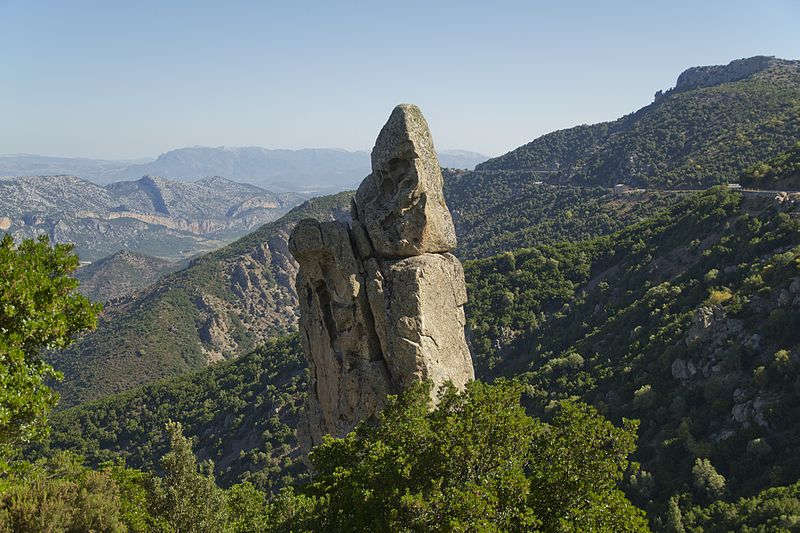Corpo Pagina
The appearance of the first settlements in the territory of Urzulei, a village located in the Supramonte in the province of Nuoro, dates back to the Nuragic era, as demonstrated by archaeological finds.
Among the most important sites we find the Giants’ tombs of S’Arena, in Fennau area: the two burials, made of local limestone with an isodomic structure, consist of an apsidal body facing east, respectively approximately 15 meters long and a half (the one further north) and 13 meters and a half. The funerary chambers culminate in a semicircular exedra, intended for funeral rituals. The two monuments are not coeval, but were built at two different times, both referring to a chronological span between the Late Bronze Age and the Final Bronze Age.
The two Giants’ tombs of S’Arena are included within a larger archaeological complex: in fact, a few hundred meters away are the remains of the nuraghe and the village of Perdeballa. The nuraghe, which stands at just over a thousand meters above sea level, is complex and characterized by a rather peculiar structure, due to the irregular soil conditions; the nuraghe in fact consists of some corridor-style rooms and others with tholos roofs. As regards the dating of the nuraghe and the village of Perdeballa, the excavations have revealed materials that can be classified between the final phases of the Middle Bronze Age and the Recent and Final Bronze Age.
Another nuragic site of particular importance is the cave of Sa Domu ‘e s’Orcu, interpreted by some scholars as a center for bronze processing, due to the large quantity of metal objects found here. The cave has yielded several finds of great importance, some of which are now exhibited in the Musei Nazionali di Cagliari. The best known is the bronze group called “The Mother of the Killed”: a female figure sitting on a stool, dressed in a tunic and wrapped in a cloak, holds in her lap a young man who has a gamma-hilted dagger on his chest. The group, dated to the Early Iron Age (10th – 7th century BC) has been interpreted as a sort of “Pietà” ante litteram, or as a mother holding her young dead son in her arms. According to a more recent hypothesis, however, the female figure would be a late Nuragic representation of the mother goddess. Among the other bronzes found in the cave of Sa Domu ‘e s’Orcu there are also an archer, a shepherd and a praying warrior.
In a votive cave in the territory of Urzulei, not better specified by Taramelli (according to some scholars to be identified in the same cave of Sa Domu ‘e S’Orcu), a multiple fusion matrix in chlorite schist, approximately 45 centimeters long, was also found. Its lateral surfaces are equipped with quadrangular sockets useful for transport; the main faces instead show grooves for pouring the metal in the shape of a double ax with expanded cuts.
Also notable is the Nuragic village of Or Murales, made up of around a hundred huts organized into blocks. The elevation, in limestone, is preserved in some cases for a height of 3 meters and includes the architrave of the access door. The finds from the village (including pans, jars and millstones) allow us to refer the town to the last phases of the Middle Bronze Age and the Final Bronze Age (approximately 1500 – 1000 BC).
ph.credits: trolvag via Wikimedia Commons

